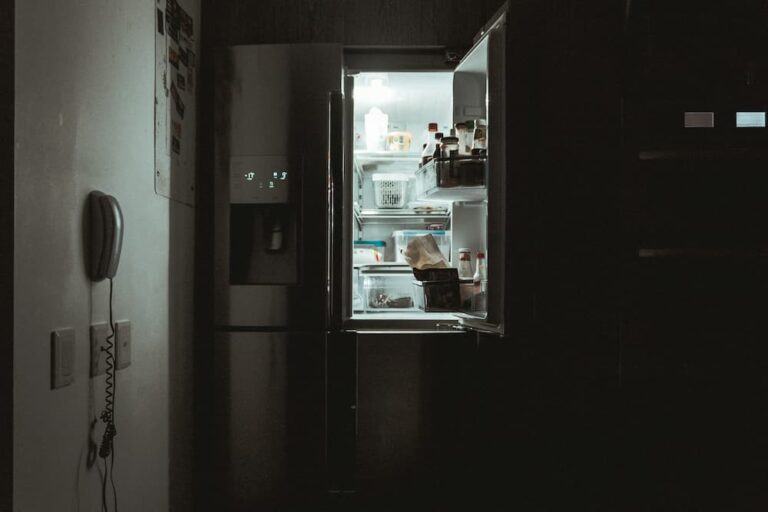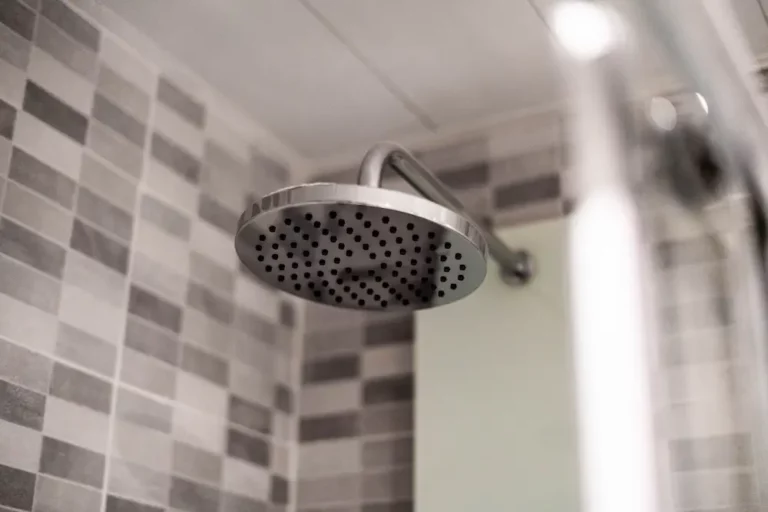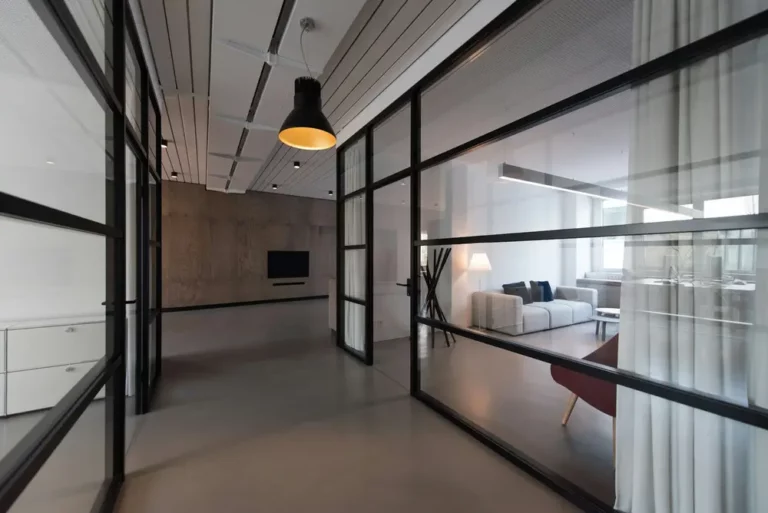Maximize Your Small Room: Stylish King Bed Decor Ideas
For years, I was convinced that squeezing a king bed into our snug bedroom was a pipe dream. The very thought seemed ludicrous, given the king’s grandeur and our room’s modest dimensions. I’d often find myself envying others’ spacious sleeping arrangements, wishing we could enjoy the same luxury.
It wasn’t until we moved and I delved into some serious research that I realized a king bed might just be possible, even in a small space. It turns out the size difference between queen and king beds wasn’t as vast as I’d imagined. Who knew? This revelation was a game-changer, and it got me thinking about how to make it work.
The Unique Appeal of a King Bed in a Compact Bedroom
When I first entertained the idea of squeezing a king-sized bed into my modest bedroom, I’ll admit I had my doubts. The allure of sprawling out in a spacious bed without jockeying for elbow room seemed like a luxury not meant for my limited square footage. Yet, the dream persisted. Interestingly, the more I researched and experimented, the clearer it became: a king bed’s generous proportions don’t just promise better sleep; they also offer an unexpected charm to smaller rooms.
First off, let’s tackle the obvious – space. In a compact bedroom, every inch counts, and a king bed occupies a significant chunk of real estate. But here’s where it gets interesting. The size of the bed naturally becomes the focal point, simplifying design decisions. Instead of cluttering the room with multiple pieces of furniture, I found myself focusing on quality over quantity. The bed’s dominance encouraged me to select fewer, more impactful pieces, resulting in a cleaner, more intentional space.
Additionally, the psychological impact of a king bed in a small room cannot be overstated. There’s something inherently luxurious about a large bed that transforms the perception of the entire room. Suddenly, my bedroom felt like an exclusive suite, a private retreat where relaxation and comfort were paramount. The bed’s presence elevated the room’s ambiance, making it feel cozier and more inviting than ever before.
To adapt my small space for a king bed, strategic choices were necessary. Opting for wall-mounted nightstands freed up precious floor space while maintaining functionality. Similarly, choosing sconces that could be adjusted and dimmed allowed for adaptable lighting that didn’t encroach on the room’s limited space. These thoughtful adjustments ensured that the bed complemented the room rather than overwhelmed it.
Incorporating storage solutions proved to be another game-changer. Beds with built-in storage or ones that allowed for under-bed storage boxes became invaluable. Suddenly, the space beneath the bed was not just empty square footage but a place to neatly stow away off-season clothing, extra bedding, and more. This not only helped keep the room tidy but also maximized the functionality of the space occupied by the bed.
Furniture Arrangement for Space Optimization
When it comes to fitting a king bed into a small bedroom, choosing the right furniture is critical. I’ve learned that multi-functional pieces are absolute game-changers. For instance, choosing bedside tables with drawers provides a spot for my nighttime reads and a hidden storage space for less appealing bedroom essentials. Moreover, opting for a sleek, high-legged dresser allows for both storage and an airy feel, minimizing visual clutter. The key here is to select furniture pieces that serve multiple purposes without overwhelming the room.
Space-Saving Bed Placement Strategies
One of the most effective approaches I’ve discovered is placing the king bed in the room’s center, allowing it to serve as the focal point while maximizing walkway space around it. This setup also offers easier access to the bed from either side, making the room appear more symmetrical and organized. Another strategy worth trying is pushing the bed against the longest wall. This placement provides ample space for movement on the opposite side and enhances the room’s spaciousness. It’s all about finding the balance between aesthetic appeal and practical functionality.
Corner and Wall Space Utilization
Maximizing corner and wall space can dramatically improve a small bedroom’s functionality. Installing floating shelves above the bed or in a neglected corner turns dead space into a useful storage and display area. I also advocate for wall-mounted lighting fixtures to free up valuable nightstand surface area. Choosing sconces that articulate or have a swing arm feature allows me to adjust the lighting based on my current activity, whether it’s reading before bed or working on a small project in the evening. Additionally, utilizing the corners for a compact work desk or a cozy reading nook can add to the room’s charm without sacrificing precious floor space.
Innovative Storage Solutions
When you’re trying to figure out how to fit a king-sized bed into a small room, storage becomes crucial. I’ve learned a few tricks over the years that can help make the most out of every square inch.
Under-Bed and Overhead Storage Ideas
I’ve always been a fan of making the space under the bed work overtime. Opting for a bed frame that allows for storage underneath can be a game-changer. I’ve seen platforms with built-in drawers that are perfect for stowing away out-of-season clothing or extra bedding. But if your bed doesn’t come with these, don’t worry. You can get creative with stylish bins or baskets that slide easily underneath. Trust me, it’s not just practical but can add a nice touch to the room’s decor.
Then, there’s the often-overlooked space above the headboard and around the bed. Installing floating shelves can provide a home for books, photos, and other personal items without taking up valuable floor space. I even mounted a couple of overhead cabinets once – it was a bit of a project but well worth the effort for how much storage space I gained.
Multifunctional Furniture: Combining Aesthetics with Utility
I’ve learned that multifunctional furniture in a small bedroom with a king-sized bed is worth its weight in gold. A perfect example is a bedside table that doubles as a desk. It’s not just a place for your lamp and phone; it can also serve as a compact work area during the day. I’ve personally used a fold-down desk that attaches to the wall next to my bed. It’s incredibly convenient and, when not in use, folds up to free up space.
Another piece of furniture I swear by is an ottoman at the foot of the bed. The right one can serve multiple purposes –additional seating, a comfy spot to put on your shoes, and, yes, extra storage. I chose an ottoman that opens up to reveal a large storage area inside. It’s the perfect place to keep spare linens and pillows out of sight but within reach.
Expanding Visual Space
In my journey to make every inch of my small bedroom count, I’ve discovered several game-changing strategies to visually expand the space. It’s not just about how much physical space you’ve got but how you use it to create an illusion of more room.
Loft and Murphy Beds for Maximizing Floor Space
One of the first things I looked into was how to free up more of my floor space. That’s when I stumbled upon the concept of loft and Murphy beds. By elevating my bed, I realized I could utilize the area underneath for storage, a workspace, or even a cozy reading nook. Not only did this make my room look bigger, but it also added a unique aesthetic charm. Murphy beds took this idea a step further by allowing me to fold the bed up against the wall when not in use. This transformation was a game-changer on days when I needed extra room for exercise or hobbies. It’s like having a bedroom that doubles as a multifunctional living space.
Vertical Space: Beyond Traditional Boundaries
Next, I turned my attention upward. I learned that the walls and the area just below the ceiling are often underutilized spaces. Installing floating shelves and hanging cabinets helped me clear out clutter from the floor and made the room feel less crowded. This approach not only provided me with extra storage but also drew the eye upward, creating an illusion of height. I even added a couple of hanging plants for a touch of greenery that didn’t take up any precious floor space. These simple additions made a significant impact on how spacious the room felt.
Room Enlargement by Altering Physical Structures
Finally, I explored how altering physical structures could enhance the sense of space. This included strategies like opting for sliding doors instead of traditional swing doors to save space. I also found out that integrating mirrors strategically across one wall can visually double up the room’s size, making it appear more open and airy. Another interesting idea was creating a half-wall or glass partition to define areas without making the space feel boxed in. These structural tweaks required a bit more effort and investment, but the payoff in terms of visual space was immense.
Throughout this journey, I’ve learned that while my bedroom might be small in size, the possibilities to make it feel spacious and welcoming are virtually endless. By thinking creatively and making smart choices, I’ve managed to craft a space that feels both cozy and open, a place I love to call my own.
Crafting the Illusion of Space with Color and Light
Selecting Colors for Spatial Enhancement
When I think about making a small room feel larger, color choice jumps to the top of my list. It’s fascinating how certain colors can trick our eyes into perceiving more space. I’ve found that light, airy hues play a crucial role in this illusion. Opting for soft whites, creams, or pastels on the walls not only reflects more light but creates a seamless expanse that feels boundless. Neutral colors maintain a minimalist look, avoiding the visual clutter that can shrink a room’s appearance. It’s not just about the walls, though. Continuing these color schemes through bedding, curtains, and even flooring enhances the expansive effect.
Natural Light: A Key Element in Small Spaces
I can’t stress enough the importance of natural light in making a small bedroom feel more spacious. It’s all about letting in as much daylight as possible. Sheer curtains are my go-to, as they allow light to permeate the room while offering a bit of privacy. Placing mirrors opposite windows is another trick I swear by. It doubles the amount of perceived space by reflecting light and the outdoor view, creating a sense of depth that’s hard to achieve otherwise. On days when the sun is generous, it fills the room, casting soft shadows that add to the airy ambiance. It’s like nature’s helping hand in our quest for more space.
Artificial Lighting to Transform Room Dynamics
When sunlight starts to fade, artificial lighting takes center stage. The right setup can continue the illusion of space into the night. I prefer wall-mounted sconces with adjustable arms; they’re perfect for directing light exactly where it’s needed without eating into precious floor space. Dimmable LED lights are fantastic for adjusting the room’s mood and perceived size. A softer light can make the room feel cosy and intimate, while brighter lights can enhance the feeling of openness. Layering light sources at different heights and intensities also adds to the illusion, drawing the eye upward and across, mimicking the natural flow of daylight.
Thoughtful Layout and Room Design
When it comes to incorporating a king bed into a small room, the layout and design aren’t just about aesthetics; they’re about making the most of the space available. I’ve found that a well-thought-out design can make a world of difference. Let’s dive into some strategies that I’ve personally tried and found effective.
Effective Bed Orientation for Space Conservation
Finding the right orientation for your king bed can significantly impact the perceived spaciousness of the room. I’ve experimented with placing the bed in various positions and discovered that positioning it against the longest wall usually preserves the most floor space. This layout allows for easier access on either side of the bed, which is crucial for maintaining a functional bedroom. However, in some rooms, an angled placement in a corner can open up the room in unexpected ways. It’s all about trial and error to see what works best in your space.
Layout Designs: Symmetry vs. Asymmetry
Symmetry and asymmetry can both play into the room’s overall feel and flow, especially with a large bed dominating the space. I’ve always been a fan of symmetry for its calming effect, aligning nightstands and lamps on either side of the bed for a cohesive look. However, asymmetry has its charm, too, offering a more dynamic and modern vibe. Mixing different-sized nightstands or lamps can add interest and character to the room. Don’t be afraid to break the rules and mix things up until it feels right for you.
Using Design Elements to Alter Perceived Space
Design elements such as color, texture, and lighting play a significant role in how we perceive space. I’ve leaned towards lighter colors for both walls and bedding, as they make the room feel airier and more open. Incorporating mirrors strategically can also create the illusion of more space, reflecting light and the room itself. As for lighting, choosing wall-mounted sconces saves precious floor space while adding a stylish touch. Remember, it’s the small details that can make a big difference in a compact space.
Final Reflections: Making the Most of Your Space
Fitting a king bed into a small room doesn’t mean you have to compromise on style or comfort. It’s all about making smart choices that reflect your personality and enhance your space. By integrating decorative accents, strategically placing mirrors, and adding personal touches, I’ve found that even the smallest rooms can feel spacious and welcoming. Remember, it’s the unique details and love you pour into your space that transform it from just a room into a sanctuary. So, don’t shy away from making bold choices. After all, it’s your personal haven where every inch should speak to your heart.
FAQ – Frequently Asked Questions
What decorative accents work best in a small bedroom with a large bed?
Opt for throw pillows, area rugs, and artwork that reflects your personal interests and experiences to add character to the room without taking up much space.
How can I personalize a small bedroom that includes a king-sized bed?
Infuse the space with elements that reflect your personal charm, such as books, travel souvenirs, and artwork, to make the room feel uniquely inviting.
Is it possible to have a stylish and functional small bedroom with a king-sized bed?
Yes, by utilizing decorative accents, personalized items, and strategic layout adjustments, you can create a stylish and functional small bedroom with a king-sized bed.






